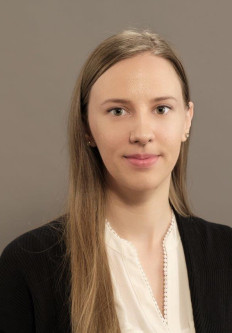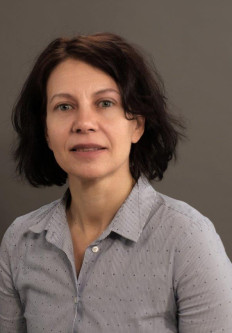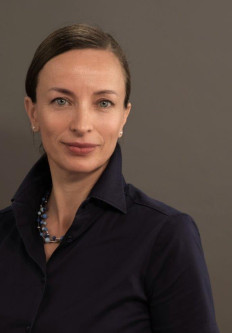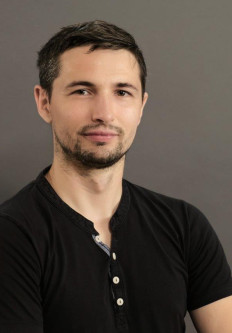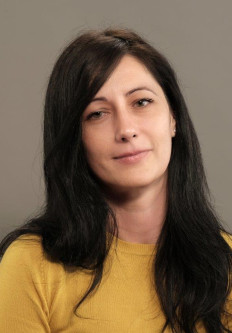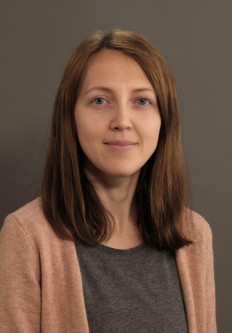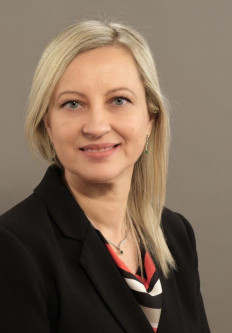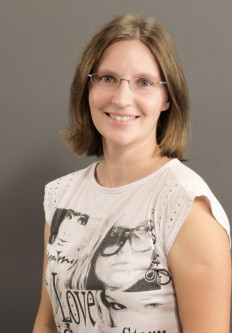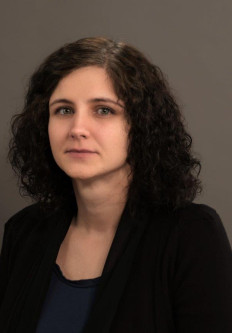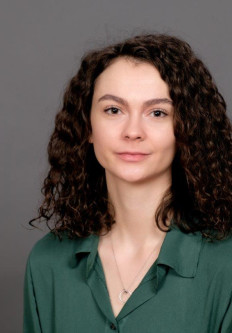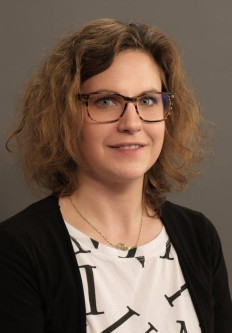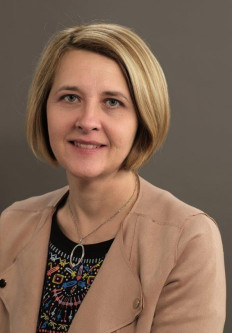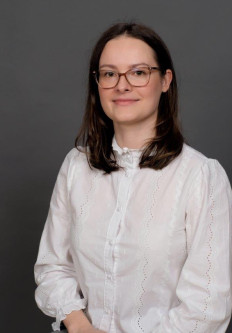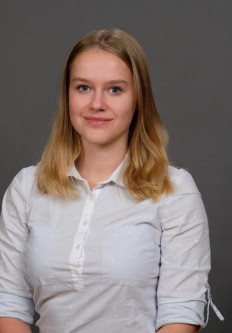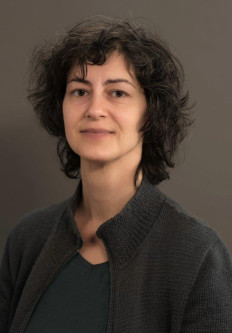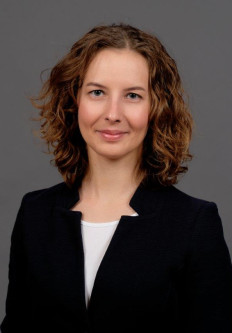

Courses for Erasmus Students
Below you can find the descriptions of the courses that are or used to be taught in English. For the list of courses taught in English in the current year see here.
The list of undergraduate courses in English:
Objectives and subject-specific competences
Objectives: At subject students gain knowledge about the potential of learning in groups in different life periods and in different circumstances, knowledge about effective interaction at learning in groups, they also gain methods and strategies for the development of successful interaction.
Competencies: Students will know the theoretical basis about the influence of interaction on learning and about processes in group learning by which objectives on cognitive, affective-motivational and social level of persons functioning can be achieved. Students will know the key conditions for successful learning in groups; they will learn to use different methods and strategies for the structuring of interaction in learning in groups or in pairs (peer-tutoring methods, cooperative learning methods, and collaborative learning methods). Students will be able to use learning in groups in their work with students at different school levels, in work with students with special needs, in work with adults and in computer supported collaborative learning (CSCL).
Description of content
Theoretical basis of learning in groups (cognitive, constructivist, socio-cultural and motivational theories). Research about effects of learning in groups on cognitive, affective-motivational and social processes. Definition of different ways of learning in groups (peer-tutoring, cooperative learning and collaborative learning). Key elements of successful learning in groups (group development, group interdependence and individual accountability, social skills development, interaction structuring) and methods for their development. Possibilities of application of learning in groups in school with children, adolescents and adults. Group work with children with special needs (i.e. children with learning problems. Inclusion promoting with learning in groups. Group work with adults (parents, teachers, community, life-long learning). Computer supported collaborative learning (CSCL) – potential and strategies for its implementation in school work. Most common obstacles at learning in groups and strategies for their dispatching.
Basic bibliography
Gilies, R.M., Ashman, A.F. (2003). Co-operative Learning. The social and intellectual outcomes of learning in groups. London: Routledge Falmer.
O’Donnell, A., King, A. (1999). Cognitive perspectives on peer learning. Mahwah, NJ: Lawrence Erlbaum Associates.1-65, 87-116, 179-196.
O’Donnell, A.M., Hmelo-Silver, C. E., Erkens, G. (2006). Collaborative learning, reasoning and technology. Mahwah, NJ: LEA, 1-60, 323-354.
Peklaj, C., s sodelavkami (2001). Sodelovalno učenje ali kdaj več glav več ve (Cooperative learning or when more heads know more). Ljubljana, DZS.
Envisaged learning outcomes
Knowledge and understanding
Students:
- know the theoretical basis of learning in groups (cognitive, constructivist, socio-cultural, motivational theories),
- know research of effects of learning in groups on cognitive, affective-motivational and social processes,
- know different modes of learning in groups (peer-tutoring, cooperative learning, collaborative learning, CSCL),
- understand processes which are necessary for successful group learning and know their consequences for cognitive, affective-motivational and social level of students functioning,
- know key elements for successful learning in groups: group development, positive interdependence, individual accountability, social, skills, and methods for interaction structuring).
Application
Students can:
- compose heterogeneous an homogenous learning groups, depending on their goal,
- establish positive interdependence and individual accountability in groups,
- develop social skills for group work with the use of modelling, reinforcement, skill training, with analysis of group processes,
- use group work according to their objectives (cognitive, affective-motivational, social) with students on different age levels and with different needs,
- solve the problems relating to learning in groups.
Reflection
Students:
- know how to monitor and evaluate group work and they know how to react to improve the group work,
- can estimate for which objectives (cognitive, affective-motivational, social) is learning in groups an appropriate method and when it is better to use some other mode of learning.
Transferable skills
Students learn how to use different methods of group work in different situations, in different contexts, for students of different age in for different purposes.
Curriculum compiler
Melita Puklek Levpušček, PhD, Full professor
Cirila Peklaj, PhD, Full professor
Peklaj, C. (1998). Spodbujanje sodelovanja - različni pristopi k razvoju sodelovalnih veščin v razredu (Cooperation promotion – different approaches to the development of cooperative skills in the class). Sodobna pedagogika, 49/3, 287 – 300.
Peklaj, c. Vodopivec, B. (1999). Effects of cooperative versus individualistic learning on cognitive, affective, metacognitive and social processes in students. European Journal of Psychology of Education, XIV/3, 359-373.
Peklaj, C., s sodelavkami (2001). Sodelovalno učenje ali kdaj več glav več ve (Cooperative learning or when more heads know more). Ljubljana, DZS. Puklek Levpušček, M. (2005). Skupinsko delo za aktiven študij [Students working in teams]. Ljubljana: FF CPI.
Puklek Levpušček, M. (in print). Socialna anksioznost: razvojni, šolski in klinični vidik [Social anxiety: Developmental, school and clinical perspectives]. Ljubljana. Ljubljana: Filozofska fakulteta.
Puklek, M. (2001). Skupinsko delo: Kako ga oceniti? [Team work: How to assess it?] Didakta, 60/61, 47–51.
Objectives and subject-specific competences
Objectives: to explain contemporary models of the development of individual differences (ID) in childhood/adolescence, types of continuity and change in ID, a role of genetic and environmental factors in the development of ID, effects of early ID on developmental outcomes and age-specific methodology in investigating ID. Competences: understanding of different kinds of continuity/change in the development of ID, mechanisms of continuity/change, relative effects of genetics and environment on ID and developmental models of IR in childhood/adolescence; efficiency in explaining the role of ID in later developmental outcomes and applying age-specific techniques, methods and approaches to assess ID in pre-adult developmental periods.
Description of content
Contemporary models of the development of individual differences (ID) in children and adolescents, a person-centered and a trait-centered approach in exploration of ID. Several types of developmental change (or continuity) in ID: mean- or absolute-level change (in mean-trait expression between different age-groups), relative change (in individuals’ rank-ordering within their age-group over time), individual-level change (reliable change within the person over time), ipsative change (in individual trait-profile over time), structural change (in the structure of traits over time), type-level change (in the structure of the trait-profile), individual type-membership change and continuity/change in trait expression across contexts. The role of genes and envorionment in the development of ID: direct, mediating and the effects of G-O interaction. Assessment of ID in childhood and adolescence: age-specific approaches, methods, techniques and measures with an emphasis on temperament, personality and characteristics of social behaviour (internalizing, externalizing and social competence). The role of early ID in the development of social adjustment, cognition, academic motivation, competence and achievement. Personality, cognitive and social factors of academic competence and achievement in childhood/adolescence. Temperament and personality characteristics in context: the interactions between phenotypic expression of ID and context characteristics on developmental outcomes.
Basic bibliography
- Kavčič T., & Zupančič, M. (2006). Osebnost otrok in njihovi medosebni odnosi v družini [Child personality and interpersonal relationships within families]. Ljubljana: Znanstvenoraziskovalni inštitut Filozofske fakultete. (80 pages to study)
- Zupančič, M. (in preparation). Razvoj individualnih razlik med otroki in mladostniki: Petfaktorski model osebnosti [Development of individual differences in children and adolescents: The Five-Factor Model of personality]. Ljubljana: i2. (100 pages to study)
- Zupančič M. (2001). Razvojni predhodniki velikih pet dimenzij osebnosti [Developmental antecedents of the Big Five dimensions of personality]. In L. Marjanovič Umek & M. Zupančič (Eds.), Razvojna psihologija: izbrane teme [Developmental psychology: Selected works] (pp. 28-41). Ljubljana: Oddelek za psihologijo Filozofske fakultete. (11 pages to study)
Or in English:
- Kohnstamm, G. A., Halverson, C. F., Mervielde, I., & Havill, L. (Eds.) (1998). Parental descriptions of child personality. Mahwah, NJ: Lawrence Erlbaum Associates. (40 pages to study)
- Wachs, T. D., & Kohnstamm, G. A. (Eds.) (2001). Temperament in context. Mahwah, NJ: Lawrence Erlbaum Associates. (50 pages to study).
- Pulkkinen, L., & Caspi, A. (Eds.) (2002). Paths to successful development. Cambridge: Cambridge University Press. (100 pages to study).
Envisaged learning outcomes
Knowledge and understanding
The students:
- know, comprehend and comparatively evaluate the contemporary models of the development of ID, the role of heredity and environment, gene-environment correlations and interactions in developmental periods prior to adulthood;
- are acquainted to the age-specific instruments to assess ID in childhood/adolescence, know about their advantages and limitations in different contexts;
- understand specific types of continuity and change in ID over time, clearly distinguish between these types, comprehend and evaluate the role of ID in developmental outcomes (e.g. adjustment to (pre)school; academic and social competence).
Application
The students:
- are able to apply the knowledge attained in counselling and providing psychological assistance to target individuals and their reference persons;
- reasonably use the contemporary knowledge and explanations of the development of ID while interpreting individual cases;
- employ their knowledge about the role of ID in child and adolescent later development across different contexts;
- select relevant age-specific approaches and instruments to assess ID in children and adolescents.
Reflection
The students develop:
- a critical distance toward administration of various age-specific approaches, methods and instruments to assess ID in children and adolescents;
- skills to reduce bias when collecting, evaluating and interpreting individual- and group-level data on their own; -skills to find new and relevant professional questions basing on the knowledge and experience attained;
- ability to compare the role of ID in developmental outcomes from multiple points of view and different models of explanation.
Transferable skills
The students develop skills:
- required to work professionally with children/adolescents of different ages;
- to use scientific literature and other relevant sources of information and reflect upon the data acquired;
- to detect a professional problem, seek for appropriate sources of information, collect reliable and valid empirical data relevant to the problem under investigation;
- to employ their psychological knowledge and understanding while interpreting the empirical data obtained.
Curriculum compiler
Prof. dr. Maja Zupančič
References:
1. Zupančič, M., Podlesek, A., & Kavčič, T. (2006). Personality types as derived from parental reports on 3-year-old. European Journal of Personality, 20, 285-303.
2. Zupančič, M. (2004). Parental free descriptions of child personality: Applicability of the Five-factor model taxonomy from infancy through pre-school years. Studia Psychologica, 46(2), 145-162.
3. Zupančič, M., & Kavčič, T. (2005). Child personality measures as contemporaneous and longitudinal predictors of social behaviour in preschool. Horizons of Psychology, 14(1), 17-33.
Objectives and subject-specific competences
The student acquires basic knowledge about qualitative psychological studies: how to design such a study, collect and analyse qualitative data, and write research report.
Description of content
Introduction to qualitative research in psychology:
- Features of qualitative research
- Critics of positivistic approach, relation to quantitative research
- Reliability and validity, problems and ethical issues in qualitative research
Steps in qualitative research:
- Problem definition, theory in qualitive research, choosing proper methodology, choosing units of research
- Methods for gathering qualitative data: questionaires and interviews, survey studies, focus groups, observation (direct, with participation), diary studies; historical data; projective techniques; taking notes and transcription
- Data analysis: early steps in analysis, vignettes, writing resume; content analysis; discurse analysis; presenting qualitative data; obtaining feedback
- Drawing conclusions, documentation and presentation of the findings
Basic bibliography
Mesec, B. (1998). Uvod v kvalitativno raziskovanje v socialnem delu. Ljubljana: Visoka šola za socialno delo.
Silverman, D. (2000). Doing Qualitative Research: A Practical Handbook. London: Sage.
Envisaged learning outcomes
Knowledge and understanding
Understanding of concepts, processes and procedures in qualitative research.
Application
Application of proper research strategy and design for individual research problem, skills in categorizing qualitative data, use of computers in gathering and analysing qualitative data.
Reflection
Reflection on limitations and advantages of qualitative research, critical evaluation of qualitative studies.
Transferable skills
Use of domestic and foreign literature and other resources, collection and interpretation of data, use of ICT and other teaching aids, use of various techniques for data gathering, reporting (oral and written), identifying and solving problems, critical analysis, synthesis, writing articles, reflections on bibliography read, teamwork.
Methods of teaching and learning
Seminars, project work
Methods of assessment and the assessment scale
(a) Project
(b) 6–10 (positive) or 1–5 (negative); taking into account the Statute of the University of Ljubljana and faculty rules.
Curriculum complier
Anja Podlesek, PhD, Associate Professor
Objectives and subject-specific competences
Objectives: to acquire qualitative and advanced knowledge on two main determinants of human cognitive efficiency – intelligence and creativity; to learn about phenomenology of searching and interpreting interpersonal differences in intelligence, general and specific talents within intelligence and creativity.
Competences: Students learn how to observe the development of intelligence in individual developmental stages, how to determine and develop cognitive capacities of an individual and the optimal development of intellectual and creative potentials. They meet specific professional-ethic principles of the problematic of intelligence and creativity and the importance of their connection to the society. Various possibilities of consideration and estimation of the talented and individuals with a remarkable potential of creativity are presented. Students are able to distinguish and connect the concepts of cognitive abilities and creativity – (i) they are familiar with methods of consideration of creative individuals, (ii) they know the mechanisms of talent and creativity in several fields of work and endeavours in science and art, (iii) they understand the development of talent and creativity in individual cognitive stages. They obtain advanced knowledge and skills of perception, of accompanying and of development of intelligent, talented and creative children and adults.
Description of content
Nature, activity and cognition of interpersonal differences in intelligence (plus general and specific talents), in creativity and the connections between them are thoroughly presented. Intelligence and creativity are, together with other psychic characteristics, a part of the whole structure of personality. The history of research of intelligence and different view on its research. A hierarchic structure of intelligence and a brief overview of different models and theories. Implicit understanding of intelligence, genetics and intelligence, biological correlates of intelligence, determinants of environment and intelligence and other factors that correlate with intelligence (education, profession, etc.) stability and changeability of intelligence, apparent and actual differences in intelligence among various social, gender and racial groups. Ways of measuring the intelligence. Social intelligence and dr. Sternberg’s Triarchic Theory. Gardner’s Multiple Intelligence Theory. The nature of talent or genius. Genius in intelligence. Specific talents in the view of Multiple Intelligence Theory. Talent in science and art. Creativity and intelligence. Measuring the creativity and creativity’s personal correlates. The basis of creative genius (combination of cognitive, environmental and personal dimensions). Talent and creativity (social basis, home environment, education and career, characteristics of people with creative achievements, motivation of the creative person, developmental patterns). Criteria of excellence and brilliance. Ordinary and extraordinary development. Creative thinking and inspiration (stages in creative problem solving, specific abilities and processes included in creative thinking, the role of unconscious processes). Intuition and unconsciousness. Genetic questions of talent and creativity. Extraordinary individuals. Discovering, observing and encouraging the creativity. Creativity in art. The connection between intelligence, talent and creativity with some other personal characteristics. Emotional intelligence and its parallels with intelligence.
Basic bibliography
Eysenck, H. J. (1995). Genius: The natural history of creativity. Cambridge: Cambridge University Press.
Gardner, H., Kornhaber, M. L. in Wake, W. K. (1996). Intelligence: Multiple perspective. Fort Worth,TX: Harcourt Brace.
Sternberg, R. J. (ur.) (1999). Handbook of creativity. Cambridge: Cambridge University Press. (izbrana poglavja)
Envisaged learning outcomes
Knowledge and understanding
Students hear about theoretical and practical basis of the construct of intelligence and its hierarchic structure. They understand and know how to apply different approaches to the cognition of intelligence. They acquire extended information on the nature of intelligence and learn how to critically see that construct. They learn to see talent as a characteristic that places the individual to the top of the variability of general or specific intellectual abilities. They learn about theories and concepts of recognizing the talented, they get to know and work on important differences and relationships between the concepts of cognitive abilities and creativity, they understand principles of discovering and observing the talented and the estimation and consideration of creative individuals; they are acquainted with tools and procedures of detecting the talented.
Application
Students learn about the role of intelligence in the efficiency of an individual in everyday life. They learn the concept and practical differences between concepts of intelligence, talent and creativity. Mechanisms of talent and creativity in different fields of work and the endeavour in science and art are presented in examples of extraordinary individuals. The main emphasis is on the observation of the development of talent and creativity with children in different developmental stages.
Reflection
Professional-ethic principles of handling with the problematic of intelligence, talent, creativity and the importance of social connection with these constructs are presented to students. They need to know how to understand the theory and connect it with practical experience when meeting different components and specific factors of intelligence, at the work with talented and when recognizing creative handling.
Transferable skills – not tied to just one subject
Students gain advanced information on the nature of intelligence and learn to critically see that construct. They learn how to handle the talent as a characteristic that places an individual in the top of variability of general or specific intellectual ability. They get to know theories and concepts of recognizing the talented, how to work on important differences and relationships between concepts of cognitive capabilities and creativity, they learn and understand the principles of discovering and accompanying the talented, estimation and consideration of creative individuals. Through this, they develop abilities of critical analyse, judging and synthesis of various theoretical skills and the connection of these skills with practical experience. Along the course, they develop their skills of using national and foreign literature and other sources; they obtain information on the use of equipment for diagnosis of the talented and for discovering creative behaviour. The course is also connected with some other courses (obligatory or elective) from the study programme of psychology; i.e. Applied psychometrics, Differential psychology, Selected clinical-methodological methods, Children with special needs…
Methods of teaching and learning
Lectures, seminar or project work.
Curriculum complier
Valentin Bucik, Full Prof. PhD
Neubauer, A. in Bucik, V. (1996). The mental speed - IQ relationship : unitary or modular?. Intelligence, 22 (1), 23-48.
Bucik, V. (1997). Osnove psihološkega testiranja. Ljubljana: Filozofska fakulteta, Oddelek za psihologijo.
Boben, D. in Bucik, V. (2003). Slovenia. V J. Georgas (ur.), Culture and children’s intelligence: cross-cultural analysis of the WISC-III (str. 181-197). San Diego, CA, London: Academic Press.
Bucik, V. (2005). Ocena knjige “Inteligentnost, ustvarjalnost, nadarjenost”. Psihološka obzorja, 14 (1), 143-148.
Objectives and subject-specific competences
The intention of the subject is to educate and train the student to cooperate in planning and performing the processes of primary, secondary, and tertiary preventive programs. Competences are limited to the role of an assistant in the procedure of prevention and evaluation.
Description of content
The content includes the introduction to the nature of the field, to the nature of team approach, methods and techniques of identification risk groups, epidemiological survey and basic preventive informing the clients.
Basic bibliography
Dekleva, B. (1981). Oblike preventivnega dela. Ljubljana: Društvo psihologov Slovenije.
Greenspan, S. (ur.) (1987). Infants in Multirisk Families. Madison: International Universities Press. (pogl. I)
Gogala, B. (1990): Preventivna dejavnost centrov za socialno delo v Ljubljani: Društvo psihologov Slovenije.
Praper P. (1995). Tako majhen, pa že nervozen!?: Predsodki in resnice o nevrozi pri otroku. Nova Gorica: Educa.
Envisaged learning outcomes
Knowledge and understanding
Knowledge and skills should enable the student to introduce the statistic paradigm and integrate it with the preventive intentions. The student is informed about the logic and logistic of preventive screening programs. He also understands the logic of teamwork.
Application
Under supervision in the field of health psychology.
Reflection
Along with some basic knowledge and skills the student develops a critical view of the future.
Transferable skills
The critical understanding of the relation between statistical and clinical paradigm, between social and individual is transferable to the broad field of health psychology.
Methods of teaching and learning
Lectures, laboratory exercises, fieldwork.
Methods of assessment and the assessment scale
(a) written and oral exam;
(b) 6-10 (positive), 1-5 (negative); with regard to the Statute of UL and faculty rules
Curriculum complier
Saška Roškar, PhD, Assistant Professor
Objectives and subject-specific competences
The main objective of the subject is to familiarise students with the problems and areas of the Psychology of Everyday Life. The subject provides knowledge of main rules, concepts, theories and research approaches as treated by modern psychology, and introduces the students into main spheres of human life and man’s embeddedness into modern life. The students are being qualified for drawing up scientific and expert researches in the field of Psychology of Modern Life. Providing in-depth information of positive and optimal experiences. After finishing the programme the student gains insight into what Psychology of Everyday Life is dealing with, what goals and tasks it sets and which methods it uses. The students also gain insight into the most important theories and models of Psychology Everyday Life.
The students are capable of understanding, assessing and estimating by means of measuring instruments the most important dimensions of psychological understanding of everyday life. They are able to critically assess and understand the significance and the role of these understandings in real life and they improve their future professional experience.
Description of content
Introduction: Categories of modern life; significance of psychological findings for the understanding of modern man
Dynamics of adaptation: Adapting to modern way of life; personality theories; stress and coping with stress; motivation and emotions; emotional intelligence
Mutual relations: self-concept and self-respect; social cognition and social influence; mutual communication; friendship and love; intimacy
Development transitions: gender and behaviour; adolescence and adulthood; work and carrier; progress and expression of sexuality Physical and mental health: psychology and physical health; illness and physical reactions to illness; independent life; traumatic experience; psychological disturbances; modern forms of psychological assistance: counselling, coaching, psychotherapy, rehabilitation counselling
Individualisation of modern life: individualisation as new cultural framework for social subjectivity of an individual; individualisation and globalisation; patched identity; postmodernism and new global individuality.
Basic bibliography
Carson, R., Butcher, J., Mineka, S. (2002). Abnormal psychology and modern life. Allin Bacon, 37-88. Heatherton, T.F., & Weinberger, T.F. (1994). Can personality change? Washington DC. APA, 32-87.
Kobal Grum, D. (2003). Beings of self-concept. Ljubljana: i2, 24-77.
Matsumoto, D. (1996). Culture and modern life. London: Brooks Cole, 44-98.
Simon, B. (2004). Identity in Modern Society: A Social Psychological Perspective. Blackwell Publishers, 97-135.
Sloan, T., Broughton, J. (1995). Damaged life: The crisis of modern psyche (Critical psychology s.). London: Routledge, pp. 22-89.
Envisaged learning outcomes
Knowledge and understanding
Knowledge of concepts, models and theories of the Psychology of Everyday Life, their empirical evidence and significance for the understanding of human nature.
Application
Application of findings to understanding own experiences and behaviour as well as that of other persons.
Reflection
Scientifically justified critical assessments of everyday mentality, personality and behaviour.
Transferable skills
Skills in critical and effective use of sources, collection and interpretation of information, analyses of data and research findings, communication of expert opinions and findings in oral and written form.
Curriculum compiler
Associate professor dr. Darja Kobal Grum
KOBAL GRUM, Darja, MUSEK, Janek. Self-concept and academic achievement: Slovenia and France. Pers. individ. differ. 2001.
KOLENC, Janez, KOBAL GRUM, Darja, LEBARIČ, Nada. Motivation in school from the social-anthropological point of view. Anthropol. noteb., 2002, vol. VIII, no. 1, pp. 92-1100, no. 5, pp. 887-899.
KOBAL GRUM, Darja. Does mental health promoting school program (in Central and Eastern European schools) improve self-concept? Stud. psychol., 2006, vol. 48, no. 2, pp. 125-140.
